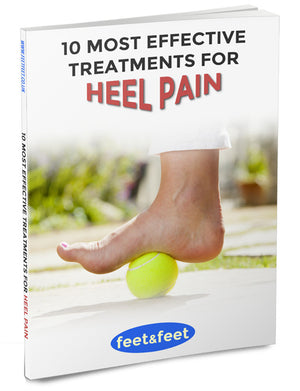Why Do I Have Ball of Foot Pain?

From a physical injury to underlying health conditions, a large number of things can cause ball of foot pain. Because of how much impact and pressure is placed upon this region of foot, this condition is relatively common and usually treatable, particularly when you have determined the cause.
If you are suffering from ball of foot pain, keep reading to learn the causes of it and how to treat it.
What Is Ball of Foot Pain?
Ball of foot pain (the medical term is called metatarsalgia) refers to the pain and inflammation in the ball of the foot. The pain affects the front of the foot, just below the toes, where the metatarsal bones are located.
In simpler terms, it usually affects the joint between your second toe and the adjoining bone - the metatarsophalangeal joint. However, it can also affect the other metatarsophalangeal joints and in severe cases, may even affect more than one simultaneously.
This pain can be caused by several factors ranging from foot deformities to ill-fitted footwear, as well as regular activities like jogging and running. Generally, whatever consistently strains or places increased force around your foot can predispose you to the ball of foot pain.
What Are the Symptoms of Metatarsalgia?
Symptoms of metatarsalgia can vary depending on the severity and the underlying cause.
Some symptoms you may experience include:
- Numbness or tingling in the toes
- Sharp and immediate pain that worsens when you flex your foot, especially barefoot – for instance, when you run, walk, or exercise
- Bruising on the foot
- Inflammation or swelling with dull, aching pain
- The feeling of having a small pebble in your footwear
- Sharp, aching, or burning pain in the metatarsals
- A hard, bony lump near your big toe
What Causes Metatarsalgia?
Different factors can cause metatarsalgia including strenuous physical exercises such as running as well as underlying health conditions like Morton’s neuroma.
The more you can narrow down the cause of your ball of foot pain, the easier it will be to decide on a treatment plan.
With that said, here are the most common causes of ball of foot pain:
- Intense physical activities and high-impact sports where excess pressure is on the feet, including running and tennis.
- Being overweight causes increased pressure on the ball of the foot.
- Bone abnormalities such as having a second toe longer than the big one and high-arched, narrow or flat feet.
- Wearing high heels or shoes that are too tight or too loose
- Joint and foot conditions like arthritis, metatarsal joint pain, Morton’s neuroma, bunions and gout.
- Freiberg’s disease, caused by a lack of blood supply to the 2nd, 3rd, and 4th metatarsal, causing the head to lose structural integrity.
- Sesamoiditis, an inflammation of the sesamoid bones, is common in ballet dancers and runners.
Is There a Cure for Metatarsalgia?
Although there’s no “one-size-fits-all” treatment for metatarsalgia, this condition can be cured. It is possible to recover fully if the right treatment is given and the underlying cause is identified and eliminated.
However, to achieve this, you’ll need to speak to a podiatrist or GP to curate a personalized treatment plan. This plan can include simple treatment options or a combination of several treatment options like surgery, specialised orthotics, and physiotherapy.
It is crucial to note that metatarsalgia can recur if the underlying factors aren’t addressed adequately.
How to Treat Metatarsalgia
There are two major ways to treat metatarsalgia - non-surgical and surgical. The type of treatment you typically get will depend on the cause and severity of your condition. It will also depend on your preference.
Non-surgical treatments can be conveniently done at home by resting and elevating your foot as often as possible. You may also use an ice pack to alleviate the inflammation and bring down the swelling.
Additionally, if you’re used to high heels, you may need to swap them out for more comfortable and fitting footwear. You can also try stretching your Achilles tendon to reduce the pressure on the forefeet and strengthen the foot muscles.
Lastly, you can wear metatarsal supports, shock-absorbing shoe inserts and arch supports. If you’re overweight, try shedding some weight off, and reduce strenuous activities that stress your feet.
If non-surgical treatments fail, your healthcare provider may recommend a metatarsalgia surgery.




Leave a comment